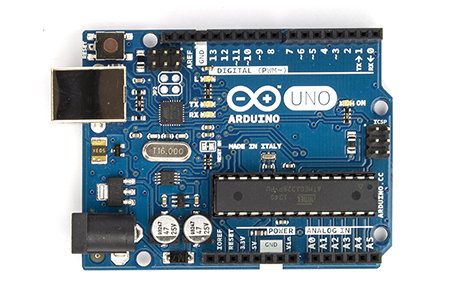
Wednesday, February 20, 2013
My Musical Instrument!
My instrument follows Crawford's model of interaction in the following ways: I listen to the sequence (Listen), think about the sequence (Think), and can then decide to alter the tempo with a potentiometer or change the sequence with a press of a button (Speak). My instrument responds to my input (Listen), executes a code based on that input (Think), and changes the output accordingly (Speak).
My instrument could be improved in many ways. Part of the problem is physical; I simply don't own as many buttons as I would like, so I am only equipped (currently) to make 4 different sequences. I also wish i had another potentiometer, which I would use to change the pitch in addition to the tempo. I also wish i had a better speaker, as this one is quite painful to listen to at any frequency. I also wish my instrument could make sounds other than just one (screeching) tone, but for this a better, more complex speaker is required.
Wednesday, February 13, 2013
Capacitor Discharging Circuit with LED Decay
Questions:
1. The Capacitor discharges through the LED because, when the switch is not pressed, there is still a complete circuit, however now the capacitor is functioning as the "battery". The capacitor is connected to the ground too but the current in the circuit is not flowing that way, because of the capacitor's battery like properties.
Capacitor Charging Circuit
Questions:
1. Adding a resister between the pushbutton and the capacitor slowed the rate at which the capacitor charged, resulting in a dimmer flash spread out over a longer time.
Dueling LEDs Circuit with Potentiometer
Questions:
1. The potentiometer in this circuit divides the current between the two LEDs. Depending on where it is turned two, the potentiometer will give more current to one light and less to the other.
LED Circuit With Potentiometer
Questions:
1. The resistor is necessary to prevent an exploding LED when the potentiometer is turned to offer the least resistance.
2.The total resistance offered by the potentiometer and resistor is 10560 Ohms, so using Ohm's Law we get 5 = I * 10560 resulting in a current of .00047A.
3. There are also digital variable resisters.
Subscribe to:
Posts (Atom)






